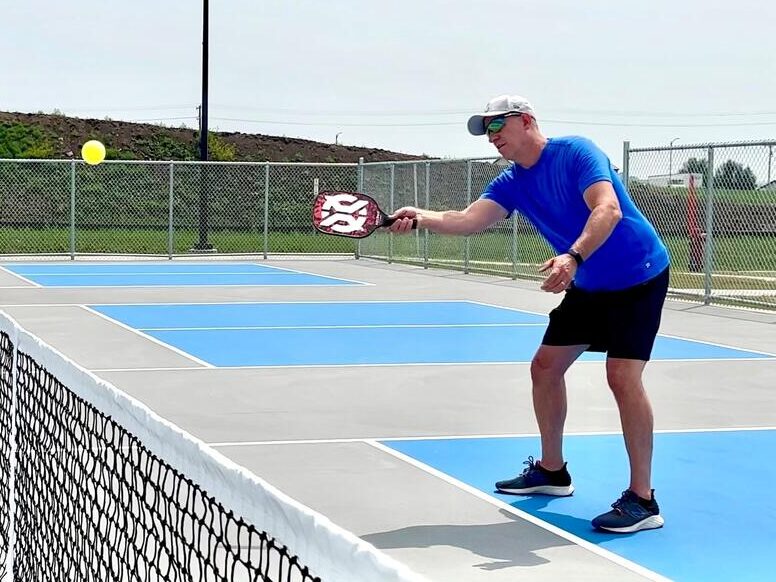Tom Hertz’s pulled calf muscle started out as an inconvenience that was slowing him down. Up to that point this 60-year-old accountant’s activity level compared with that of three-sport high school athletes.
While waiting for his calf muscle to come around, this Mandan, North Dakota, resident stayed active by walking. It didn’t feel right, but limping was better than not doing anything at all.
In hindsight, Hertz admits now, that might not have been such a hot idea.
“To make a long story short, I was walking in a weird manner trying to get my steps in,” Hertz said. “Because of that, I think I was developing lower back problems.”
“The best thing about it was how he listened." Tom Hertz, physical therapy patient
Seeing the doctor, chiropractor, physical therapist
These problems would later be diagnosed as sciatica, a pain that originates along the sciatic nerve and can cause back and leg discomfort and numbness. In Hertz’s case, he couldn’t jump during his sand volleyball games — he plays in two different leagues — and even walking for exercise was getting difficult.
He talked to his doctor and a chiropractor and made some headway but was not where he wanted to be to resume the regimen of volleyball, pickleball, cycling and working out that had been part of his life.
Hertz then decided to make a call to Sanford Health and set up an appointment with Bruce Belland, a doctor of physical therapy and a board-certified clinical specialist in orthopedic physical therapy who works out of the Sanford East Interstate Ave Clinic in Bismarck.
This was a self-referral — all Hertz did was make that initial phone call and set up a meeting with Belland, who regularly works with patients suffering from balance issues, joint pain, muscle weakness, neck and back pain and sports-related injuries.
“Bruce Belland listened to my whole story about how I’d arrived at this point,” Hertz said. “The best thing about it was how he listened. We did all the testing to make sure it wasn’t something else and then we determined it was a sciatic nerve issue so that’s what we started working on. Our level of communication was awesome.”
Within a week, Hertz’s calf muscle and back pain were much improved. He is playing volleyball at full speed now and has resumed all the rest of his activities he was involved in prior to dealing with the sore calf muscle. Occasionally the sciatica will flare up, but he eliminates the discomfort on the spot with a series of stretches that Belland taught him.
Full speed ahead
With volleyball twice a week, pickleball three times a week and a few off-road bicycle rides thrown in, it would have been easy for Belland to hear Hertz’s story and tell him that maybe it was time to start slowing down.
“Everyone is a little different about the dreams and goals that they want to pursue,” Belland said. “For Tom, it was that he wanted to go back to the recreational activities — volleyball, pickleball, going to the gym, lifting weights, walk his dog, riding his bike — and not have limitations or discomfort.”
Everything Hertz heard from Belland about ways to get back to his normal and very active life qualified as good news. The strength and conditioning exercises Belland prescribed efficiently got him back in the groove.
“I didn’t feel like I needed to be slowing down,” Hertz said. “Bruce never once told me it was time to start taking it easy. He did say that if something wasn’t working maybe we’d take a week off but everything we tried with strengthening and stretching helped me. There was no reason to slow down.”
Every patient is unique, of course, but access to the care Hertz received is not dependent on a referral from a primary doctor. Physical therapists like Belland can diagnose muscle issues and can refer patients for imaging or to see a doctor, if needed.
Hertz’s progress was impressive in part because he was a motivated patient.
“When Tom came in, he was fearing there were going to be things he could no longer do,” Belland said. “I was able to tell him that he wasn’t going to have to eliminate any of those things. We were just going to have to make him more resilient to the stresses he was putting on his body. For him, I think it was helpful that he felt confident and comfortable executing the plan. Then he could really get after it and see the difference it was making for him.”
Learn more
- After two years of physical therapy, a return to sports
- A Matter of Balance: What goes into fall prevention?
- Podcast: What is joint pain and what can you do about it?
…
Posted In Bismarck, Orthopedics, Rehabilitation & Therapy, Sports Medicine
